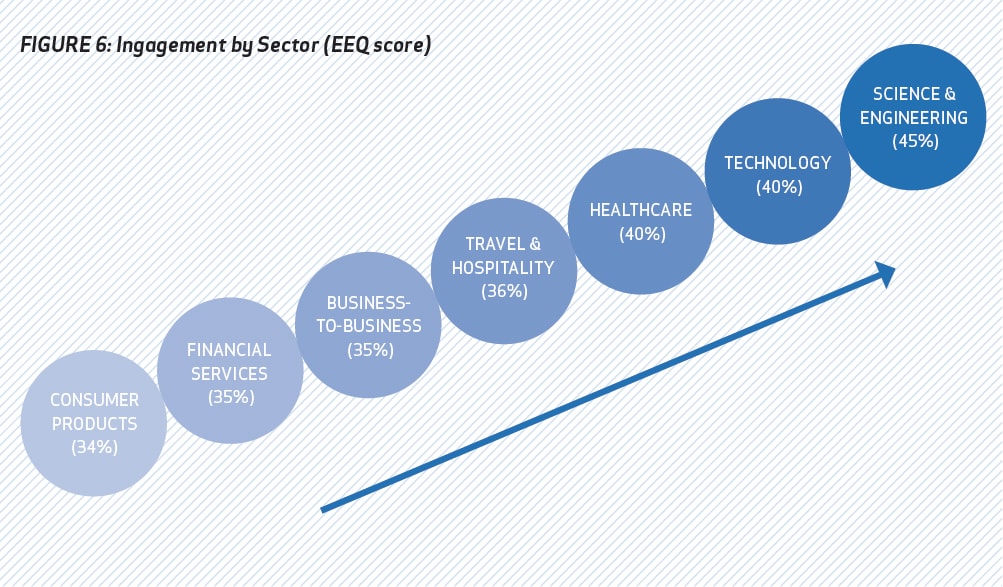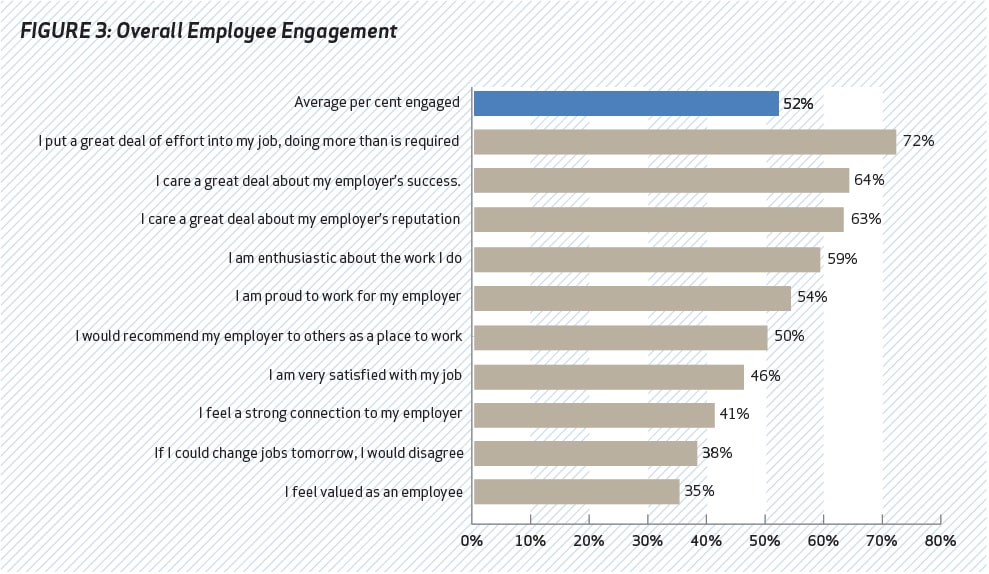People are working harder, longer and in different ways and new generations have different expectations of their careers and their employers than their parents did. As a result, employers must also evolve to find new and more relevant ways to engage, inspire and motivate up to four different generations of staff within one workplace (the Baby Boomers, Gen X, Gen Y and Gen Edge).
Furthermore, management, human resources and communications departments of Fortune 500 companies are now laser-focused on employee satisfaction and engagement. These pressures are unlikely to ease soon and as a result, engagement is challenging.
PR firm Weber Shandwick’s Science of Engagement study draws on learnings from worldwide academics in three fields – neuroscience, psychology and anthropology – to gain a deeper understanding of what drives human engagement.
It was born out of a need to draw on the learnings from these three disciplines to understand what scientifically drives engagement. By drawing on these three fields, it is possible to build a picture of the basic principles of engagement in each field. The result of this was a consensual viewpoint on the fundamental drivers of human engagement, the “19 Elements of Engagement”.
.jpg)
Figure 1: The 19 Elements of Engagement are the fundamental drivers of human engagement as defined by neuroscience, psychology and anthropology. They represent a consensus across each of these disciplines and have been used as the basis for the Science of Engagement research.
For those responsible for developing and implementing employee engagement strategies, the research uncovered five fundamental principles to help better engage a workforce:
1. Create a climate of shared values. Currently (and broadly speaking), the middle management tier of the UK workforce is not creating the culture of empathy and shared values needed to more deeply engage the broader workforce. It must be empowered and encouraged to do so.
2. Build singularity of purpose and meaning. This is a lesson we can learn from engineers and scientists. Our research shows that those in more technical roles are more engaged than others; largely due to the sense of meaning they get from their jobs, so employers should seek to help employees find this meaning whatever their role.

Figure 6: Ingagement by sector (Employee Engagement Quotient score)
3. Nurture a more creative working environment. The research shows that “creatives” are the most engaged function, mainly due to the way they are empowered to “escape and innovate“. Employers should think and act differently once in a while – especially with their “millennial” employees – introducing environments and policies that allow people to be more creative at work.
4. Give conscience substance. For the most highly engaged employees, the two most critical elements are integrity and respect. Employers should work hard to demonstrate and encourage ethics at all times, through building corporate responsibility programmes around employee passions, but also by demonstrating conscience and ethics through every action.

Figure 3: Overall Employee Engagement levels in the UK
5. Educate and inspire employees in ways that enhance their lives as well as their careers. Employee engagement is built on the recognition that people need to feel that they are progressing in work and life. Thus, employee engagement should embrace not only workplace skills development, but also inspirational training that helps people develop as individuals, not just as workers.
Whilst a more detailed analysis of individual workforces will give greater insight and allow more bespoke engagement strategies to be developed, organisations that subscribe to these principles will develop a more motivated workforce, engaged with the brand and aligned behind leadership.
Download a copy of the report here.
Written by Lisa Pantelli, head of employee engagement and change management, Weber Shandwick
PRmoment Leaders
PRmoment Leaders is our new subscription-based learning programme and community, built by PRmoment specifically for the next generation of PR and communications leaders to learn, network, and lead.
PRmoment LeadersIf you enjoyed this article, sign up for free to our twice weekly editorial alert.
We have six email alerts in total - covering ESG, internal comms, PR jobs and events. Enter your email address below to find out more:









